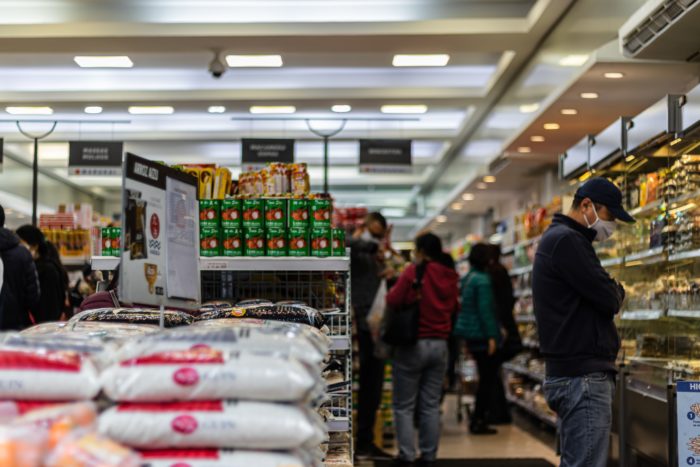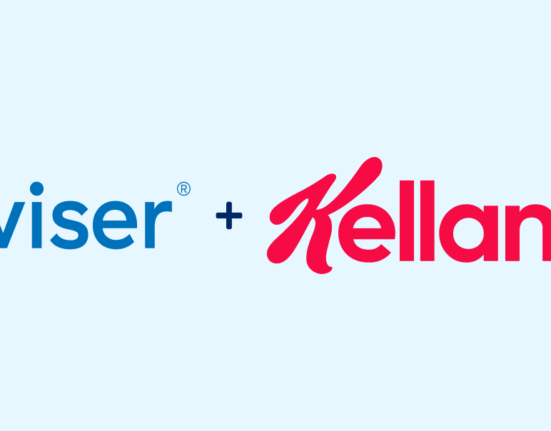Marketing to retail partners, wholesalers, and distributors is just as much part of the puzzle for brands as marketing directly to consumers.
Every retailer has multiple brands that are vying for shelf space and promotional efforts. It’s critical that you promote your brand to retailers so they choose to favor you over the crowd. Trade promotions are one of the best ways to do that.
In this article, we’ll learn what trade promotions are and why they are important, some examples of the best trade promotions, and how you can improve yours now.
What is a Trade Promotion?
Trade promotions are marketing campaigns and promotions organized by brands that are aimed at increasing sales within a retailer, sweetening the pot for both the store and the shopper. For brands, the primary goal of a trade promotion is to increase sales through their chosen retail channels.
Ultimately, this sales bump will hopefully mean your brand is more beneficial for the store than your competitors. This is partly a B2B marketing play, but it’s also a B2C play as well—which means there’s plenty of room for creativity in trade promotions.
Trade promotions can take several different forms. Here are some of the most common types of trade promotions:
- Discounts and markdowns. Offering markdowns or discounts for specific channel partners could appeal to the most price-sensitive segment of their shoppers. Discounts can, in some cases, increase the margins on each sale for the retailer, providing them with a greater incentive to sell your product.
- Incentives to individual stores. Some friendly competition between individual locations can be a great incentive for each one to push your products. Offer special future discounts to the stores or dealers who reach the highest threshold of sales.
- Field marketing opportunities. Sending brand representatives to your channel partners, particularly retailers, lets you get directly in front of your target consumer. Your brand reps can help retail staff better sell your product, making field marketing a mutually beneficial activity.
- In-store displays/visual merchandising. In-store displays, such as end caps or point-of-purchase displays, can be a great way to draw attention to your products in a crowded retail environment. Working with your retail partners to enhance the visual merchandising and presentation of your products can lead to tangible increases in revenue.
- Bundles. Product bundles are a great way to increase sales for complementary products. Offer your channel partners preset bundles at a discount, or allow shoppers to create their own bundles for a discount.
For brands, the primary goal of a trade promotion is to increase sales through their chosen retail channels.
Benefits of Trade Promotions
Brands and manufacturers can reap numerous benefits from effective trade promotions. These include:
- Better bottom-line ROI. Research from PwC found that CPG manufacturers that ran effective trade promotions saw an ROI of 10 percent to 20 percent.
- Improved customer loyalty. Trade promotions can lead to better deals for consumers. When shoppers know they can go to their favorite retailers and get your products for a great price, you can start to overtake your competitors in terms of customer loyalty.
- Increased sales for seasonal products. Trade promotions for seasonal products benefit both manufacturers and retailers. These help both parties boost sales and clear inventory before the next shopping season comes around.
- Stronger relationships with distribution channels. Relationships are vital in retail, and having a track record of successful promotions helps brands and manufacturers build stronger ties with key partners.

Best Trade Promotions
One of the best ways to understand how to put strong trade promotions into play is by seeing a few in action. In this section, we’ll discuss some good examples of trade promotions and see what’s worth emulating in them.
Coca-Cola
Coca-Cola used some eye-catching (and somewhat mind-bending) displays to drive in-store sales of Coke Zero. The displays were set up to be an inverted pyramid, with just a single can on the bottom.
This is where the visual merchandising aspect comes into play. Coca-Cola worked with its retail partners to ensure this clever display was prominently placed and properly set up to achieve the maximum visual impact.
Harry’s
In 2017, Target and men’s grooming brand Harry’s solidified their relationship when Target became the exclusive retailer of Harry’s products. The deal paid off—Target saw its market share in the shaving category increase by double digits.
Part of the success for Harry’s and Target comes from the prominent placement of the products in the store, and again, some strong visual merchandising. The original end caps deployed featured a giant orange razor, which was specifically designed to catch the eyes of shoppers. Newer end caps include cartoon-like cardboard cutouts of a man shaving, with the products still placed in clear view of shoppers.
Sephora/ModiFace
Augmented reality is still in its early days as a viable promotional channel, but some retailers and brands are already getting a lot out of it. Sephora is one of them.
The beauty retailer worked with brand partners to bring 3D facial recognition to its website. Users can see their faces in real-time and try on the different brands Sephora carries via the AR solution from developer ModiFace. Data from the developer showed that there were higher conversion rates among those shoppers who could try before they buy through AR.
This is a great example of how brands can work with retailers to explore new channels together and boost sales. Trade promotions aren’t all about in-store displays and deals. Online channels are a great place to see how a trade promotion could grow sales.
Any sales promotion you roll out with your partners must keep the customer in mind.
How to Improve Your Trade Promotions
Trade promotions shouldn’t be left to chance. Research from Deloitte showed that CPG manufacturers spend about 7 percent to 10 percent of gross sales on trade promotions. That’s a significant chunk of anyone’s budget, and it shouldn’t be squandered on things that don’t work.
Understand the Customer
Trade promotions are targeted toward other businesses, but at the end of the day, it’s all about increasing sales. That means any sales promotion you roll out with your partners must keep the customer in mind.
Do Competitive Research
You can be sure your competitors are looking for ways to run promotions and solidify their relationships with retailers, wholesalers, and distributors. Before you pitch a trade promotion, do competitive research to see which products they’re ramping up their efforts on.
Beyond that, look into the pricing strategies of the competitive landscape. Use a price intelligence tool to see what sorts of discounts your key competitors are offering. That data is critical for ensuring your promotions stand out.
Be Consistent With Pricing
Promotions can be a great way to increase in-store visibility, but don’t try to fool people. If consumers can see one price for your products online and another in-store, it can erode the trust they have for your brand. Be sure you’re priced consistently across channels and retail locations.
Think Creatively
Sometimes, the tried and true promotional methods are the best. With some creative design and a good promotion, something as time-tested as floor decals, end caps, point-of-sale displays, and product demonstrations can drive formidable sales numbers.
That said, don’t be afraid to go above and beyond the expected. Try combining different approaches. Maybe everyone who watches a product demo also gets a coupon and a sample. A good product bundle can be irresistible if the deal is right. Bring in seasonal or pop-culture references, like Johnnie Walker did with its Game of Thrones display and special blend.
Audit Your Efforts
Trade promotions aren’t a set-it-and-forget-it initiative. You should constantly be tracking key metrics around how they impact your sales. Additionally, you should be auditing your ongoing promotions across as many retail locations as you can. A retail audit program is vital to ensure your trade promotion budget isn’t being poorly spent.
Trade promotions are a key part of any brand-retailer relationship. Stay on the lookout for mutually beneficial promotional ideas that can solidify your relationships, grow your brand, and drive sales.














